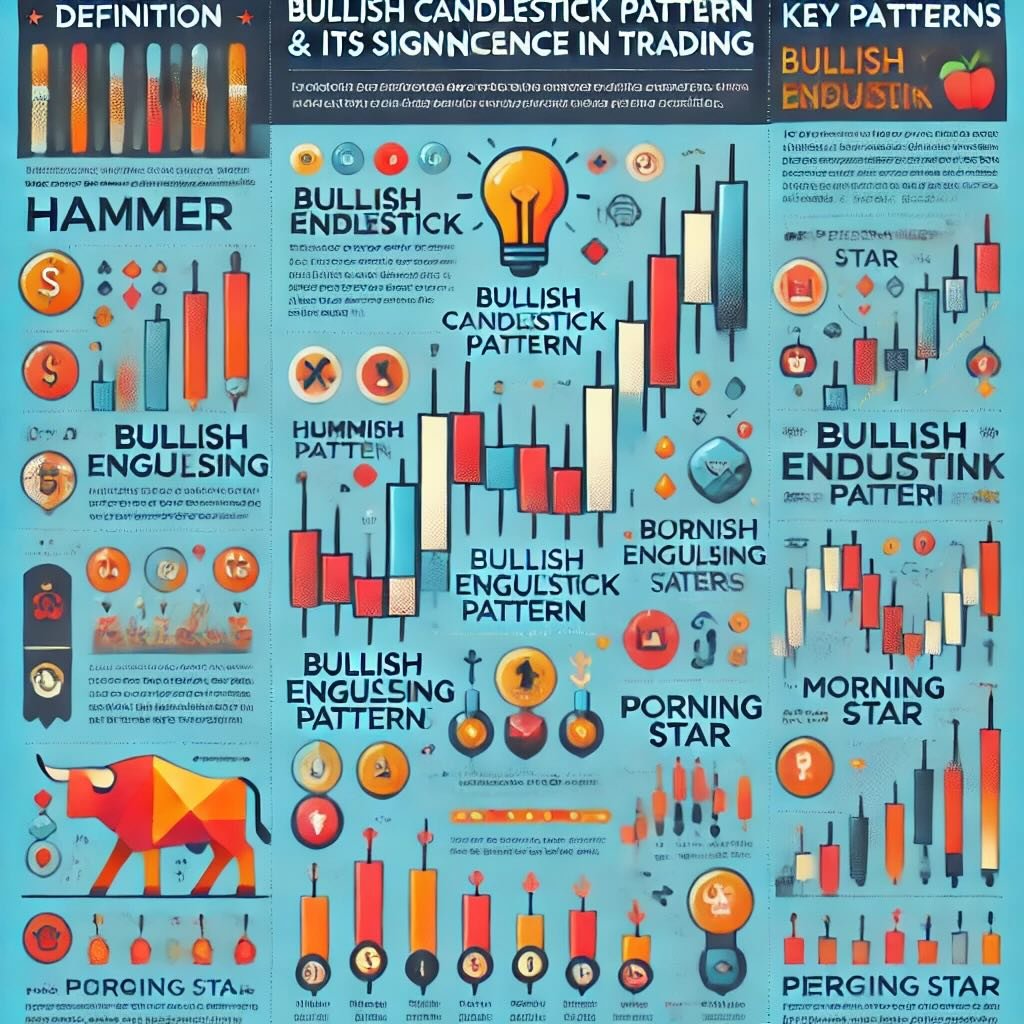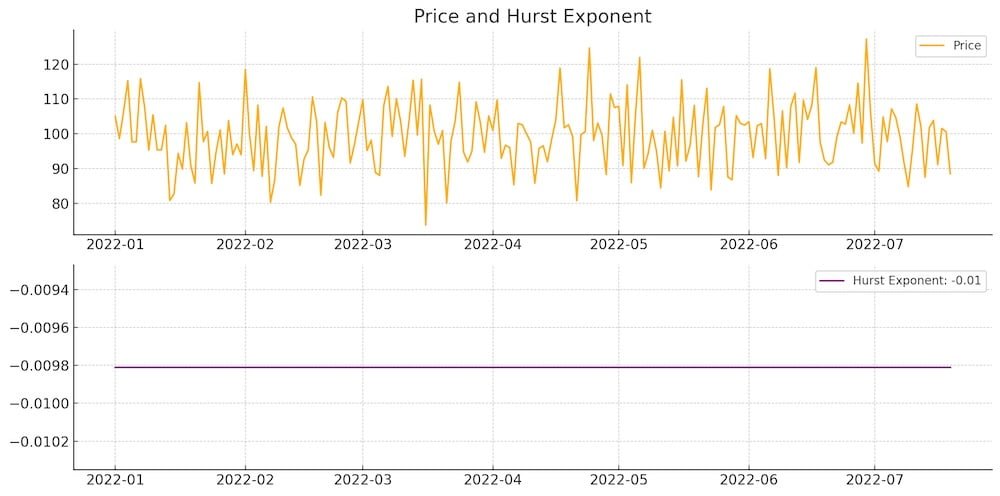Welcome to this article where we will explore the world of small-cap and large-cap stocks and discuss the importance of balancing risk and reward in investment portfolios. Investing in stocks can be a thrilling endeavor, but it’s crucial to understand the different dynamics and considerations associated with different market capitalizations.

Definition of small-cap and large-cap stocks:
Small-cap and large-cap are two common classifications used to categorize stocks based on their market capitalization. Market capitalization refers to the total value of a company’s outstanding shares in the stock market.
Small-cap stocks typically belong to companies with a relatively small market capitalization, generally ranging from a few hundred million dollars to a few billion dollars. These companies are often characterized by their potential for growth, as they are in the early stages of development or operate in niche markets.

On the other hand, large-cap stocks represent companies with a significant market capitalization, typically in the billions or tens of billions of dollars. These companies are often well-established and widely recognized, operating in mature industries. Large-cap stocks are generally considered more stable and less volatile compared to small-cap stocks.
Importance of balancing risk and reward in investment portfolios:

Achieving a balanced portfolio is crucial for investors to manage risk and maximize potential rewards. Different asset classes, such as stocks, bonds, and cash equivalents, offer varying levels of risk and return potential. It’s important to strike a balance based on individual risk tolerance, investment goals, and time horizon.
While small-cap stocks can offer higher growth potential, they also come with higher volatility and risk. Investing solely in small-cap stocks may lead to significant portfolio fluctuations and higher exposure to market downturns. On the other hand, large-cap stocks tend to be more stable but may offer relatively lower growth potential compared to their smaller counterparts.
By diversifying across different asset classes, including small-cap and large-cap stocks, investors can spread their risk and increase the potential for long-term returns. Balancing risk and reward helps mitigate potential losses during market downturns while still capturing growth opportunities.

Overview of Small Cap vs Large Cap:
In this article, we will delve into the main points related to small-cap and large-cap stocks and the importance of balancing risk and reward in investment portfolios.
Understanding small-cap stocks:
- Definition and characteristics of small-cap stocks.
- Growth potential and higher volatility associated with small-cap stocks.
- Examples of small-cap stocks and their performance.
Exploring large-cap stocks:
- Definition and characteristics of large-cap stocks.
- Stability and lower volatility associated with large-cap stocks.
- Examples of large-cap stocks and their performance.
Balancing risk and reward in investment portfolios:
- Importance of diversification across asset classes.
- Allocating investments between small-cap and large-cap stocks.
- Considering risk tolerance, investment goals, and time horizon.
Strategies for balancing risk and reward:
- Modern portfolio theory and asset allocation strategies.
- Analyzing risk-adjusted returns and historical performance.
- Monitoring and rebalancing portfolios to maintain desired risk levels.
By the end of this article, readers will have a comprehensive understanding of small-cap and large-cap stocks, along with insights on how to strike a balance between risk and reward when constructing their investment portfolios. So let’s dive in and explore the exciting world of investing!

Understanding Small-Cap and Large-Cap Stocks
Definition and characteristics of small-cap stocks:

Small-cap stocks represent companies with a relatively small market capitalization. These companies are often in the early stages of growth or operate in niche markets. The exact threshold for classifying a stock as small-cap may vary, but it generally ranges from a few hundred million dollars to a few billion dollars.
Small-cap stocks are known for their potential for high growth. These companies often have ample room for expansion and can capitalize on emerging trends or disruptive technologies. Their smaller size allows them to be more agile and responsive to market changes. As a result, small-cap stocks can offer investors exciting opportunities for significant capital appreciation.
However, investing in small-cap stocks comes with higher risks. Their smaller market capitalization makes them more vulnerable to market fluctuations and economic downturns. They may face challenges in accessing capital, and their success heavily relies on the execution of their growth strategies. Small-cap stocks can also be more illiquid, meaning there may be fewer buyers and sellers in the market, which can impact the ease of buying or selling shares.
Definition and characteristics of large-cap stocks:

Large-cap stocks, on the other hand, represent companies with a significant market capitalization. These are typically well-established companies that have reached a mature stage and are widely recognized. Large-cap companies often operate in established industries and have a dominant market position.
Large-cap stocks are known for their stability and relatively lower volatility compared to small-cap stocks. They tend to have more diversified revenue streams and established customer bases, which can provide a cushion during economic downturns. Due to their size and market presence, large-cap stocks often have access to greater resources and can weather market fluctuations more effectively.
Investing in large-cap stocks offers the potential for steady, consistent returns. These companies often distribute dividends to shareholders, providing an additional income stream. While the growth potential of large-cap stocks may be comparatively lower than small-cap stocks, they can still generate attractive returns over the long term.
Differences in risk and potential returns:
Small-cap and large-cap stocks differ significantly in terms of risk and potential returns. Small-cap stocks carry higher risk due to their smaller size, limited resources, and higher vulnerability to market fluctuations. However, they also offer the potential for explosive growth, as successful small-cap companies can experience substantial increases in their market value.
Large-cap stocks, on the other hand, are generally considered less risky due to their stability, established market positions, and greater financial resources. While they may not deliver rapid growth similar to small-cap stocks, they can provide more consistent returns and are often seen as a safer investment option.
The risk-return tradeoff between small-cap and large-cap stocks is an important consideration for investors. Small-cap stocks have the potential to outperform large-cap stocks during bullish market periods, but they can also underperform during market downturns. Large-cap stocks may offer more stable returns but could miss out on the rapid growth potential of smaller companies.
To strike a balance, investors often diversify their portfolios by including both small-cap and large-cap stocks. This approach allows them to capture the growth potential of small-cap stocks while balancing it with the stability of large-cap stocks. The specific allocation between the two depends on individual risk tolerance, investment goals, and time horizon.
It’s important for investors to conduct thorough research, analyze historical performance, and monitor the performance of their holdings regularly. By carefully assessing the risk and potential returns associated with small-cap and large-cap stocks, investors can make informed decisions to construct well-rounded portfolios that align with their investment objectives.
source: The Motley Fool on YouTube
Benefits and Risks of Small-Cap Stocks
Potential for high growth and outperformance:

One of the key benefits of investing in small-cap stocks is their potential for high growth and outperformance. Small-cap companies are often in their early stages of development, presenting investors with opportunities to get in on the ground floor of promising ventures. These companies may operate in niche markets or capitalize on emerging trends, allowing them to achieve rapid expansion.
Small-cap stocks have the potential to deliver outsized returns compared to their larger counterparts. As these companies grow and gain market share, their stock prices can experience significant appreciation. Investors who identify and invest in successful small-cap stocks early on can benefit from substantial capital gains and potentially outperform broader market indices.
Increased volatility and liquidity concerns:
While small-cap stocks offer the potential for high growth, they also come with increased volatility and liquidity concerns. Due to their smaller market capitalization, these stocks can experience sharper price swings and higher levels of volatility compared to large-cap stocks. This volatility can be attributed to factors such as market sentiment, news events, or fluctuations in investor perceptions of the company’s prospects.
Additionally, liquidity can be a concern with small-cap stocks. These stocks may have lower trading volumes, meaning there may be fewer buyers and sellers in the market. As a result, it can be more challenging to buy or sell shares of small-cap companies quickly and at desired prices. Illiquidity can potentially lead to wider bid-ask spreads and difficulty in executing trades, which may impact investment decisions.
Examples of successful small-cap stocks:
Numerous small-cap stocks have demonstrated impressive growth and generated substantial returns for investors. One notable example is Shopify Inc. (NYSE: SHOP), an e-commerce platform that enables businesses to create online stores. Since its IPO in 2015, Shopify has experienced remarkable growth, becoming one of the leading players in the e-commerce industry. The stock has delivered exceptional returns, rewarding early investors who recognized its potential.
Another example is Twilio Inc. (NYSE: TWLO), a cloud communications platform that provides developers with tools to integrate messaging, voice, and video capabilities into their applications. Twilio’s innovative approach and strong market position have propelled its stock to remarkable heights, with significant price appreciation over the years.
Yet another success story is Advanced Micro Devices, Inc. (NASDAQ: AMD), a semiconductor company that has gained traction in the competitive market by offering innovative and high-performance chips. AMD’s stock has experienced substantial growth, driven by its successful product lineup and increasing market share in the technology industry.
These examples highlight the potential rewards of investing in small-cap stocks. However, it’s important to note that successful small-cap investing requires diligent research, careful selection, and a long-term investment perspective. Investing in individual small-cap stocks can be riskier, so investors may also consider diversified approaches, such as investing in small-cap exchange-traded funds (ETFs) or small-cap mutual funds, which offer broader exposure to the small-cap segment.
Small-cap stocks offer the potential for high growth and outperformance, attracting investors seeking exciting investment opportunities. However, investors must be aware of the increased volatility and liquidity concerns associated with these stocks. By conducting thorough research, diversifying their portfolios, and carefully managing their investments, investors can position themselves to benefit from the growth potential of successful small-cap stocks.
source: Learn to Invest – Investors Grow on YouTube
Benefits and Risks of Large-Cap Stocks
Stability and established market presence:

One of the primary benefits of investing in large-cap stocks is the stability they offer. Large-cap companies are well-established, often with a long track record of success and a significant market presence. These companies have weathered various economic cycles and have demonstrated their ability to adapt and thrive in the face of market challenges.
Large-cap stocks tend to be more resilient during market downturns due to their diversified revenue streams, established customer bases, and access to ample resources. Their stability can provide investors with a sense of confidence and peace of mind, knowing that their investments are in companies with proven track records and established business models.
Potential for steady dividends and lower volatility:
Another advantage of investing in large-cap stocks is the potential for steady dividends. Many large-cap companies have a history of distributing regular dividends to their shareholders. These dividends can provide a consistent income stream for investors, making large-cap stocks attractive for income-oriented investors, such as retirees or those seeking stable cash flow.
Furthermore, large-cap stocks generally exhibit lower volatility compared to their small-cap counterparts. Their established market positions and broader investor base contribute to more stable stock prices. While large-cap stocks can still experience fluctuations in their share prices, the magnitude of these price swings is typically lower than what is observed with small-cap stocks. This reduced volatility can provide investors with a smoother investment experience and potentially lower risk.
Limitations on growth and potential returns:
Despite the benefits, large-cap stocks do come with limitations on growth and potential returns. Due to their size and maturity, large-cap companies may find it challenging to maintain the same level of rapid growth seen in smaller, more nimble organizations. Large-cap stocks are often already well-penetrated in their markets, leaving limited room for expansion compared to small-cap stocks operating in high-growth sectors.
The sheer scale of large-cap companies can make it more difficult for them to achieve double-digit growth rates consistently. Investors looking for significant capital appreciation may find the growth potential of large-cap stocks relatively more modest compared to smaller, high-growth companies.
Moreover, large-cap stocks are subject to certain institutional constraints. Their size and market presence make it challenging for large-cap stocks to generate outsized returns solely through stock price appreciation. Institutional investors often have substantial holdings in large-cap stocks, making it harder for individual investors to influence their performance or contribute to substantial market inefficiencies.
However, it’s important to note that large-cap stocks can still provide solid returns, especially when considering their potential for steady dividend payments, capital preservation, and lower overall risk.
Investors seeking a balanced approach to investing often allocate a portion of their portfolio to large-cap stocks. By combining the stability of large-cap stocks with the growth potential of other asset classes, such as small-cap stocks or fixed-income instruments, investors can construct a well-diversified portfolio that balances risk and return.
In summary, large-cap stocks offer stability, established market presence, and the potential for steady dividends. While they may have limitations on growth and potential returns compared to smaller companies, they can provide a solid foundation for investors seeking more conservative investment options. By carefully considering their investment goals, risk tolerance, and time horizon, investors can leverage the benefits of large-cap stocks to build a balanced and resilient investment portfolio.
source: The Oxford Club on YouTube
Balancing Small-Cap and Large-Cap Stocks in Your Portfolio

Diversification as a risk management strategy:
Diversification is a crucial risk management strategy when balancing small-cap and large-cap stocks in your investment portfolio. By diversifying across different asset classes, sectors, and market capitalizations, investors can spread their risk and potentially reduce the impact of any individual stock’s performance on their overall portfolio.
Including both small-cap and large-cap stocks in your portfolio can provide a level of diversification. Small-cap stocks offer the potential for higher growth, but they also come with higher volatility and risk. Large-cap stocks, on the other hand, provide stability but may have relatively lower growth potential. The combination of both can help mitigate the extremes of risk and reward, creating a more balanced portfolio.
Determining your risk tolerance and investment goals:
Before allocating funds between small-cap and large-cap stocks, it’s crucial to assess your risk tolerance and investment goals. Risk tolerance refers to your ability and willingness to endure fluctuations in the value of your investments. If you have a higher risk tolerance and a longer investment horizon, you may be more comfortable allocating a larger portion of your portfolio to small-cap stocks to capture their growth potential.
Investment goals play a vital role in determining the appropriate allocation as well. If your goal is to achieve substantial capital appreciation, you might consider allocating a higher percentage of your portfolio to small-cap stocks. On the other hand, if you prioritize stability and income generation, a larger allocation to large-cap stocks, which often offer dividends, may be more suitable.
Allocating funds between small-cap and large-cap stocks:
The allocation of funds between small-cap and large-cap stocks will vary based on individual circumstances. There is no one-size-fits-all approach, as it depends on factors such as risk tolerance, investment goals, time horizon, and market conditions. However, here are a few general guidelines to consider:
- Determine your target asset allocation: Start by establishing a target asset allocation that aligns with your risk tolerance and investment goals. This allocation will specify the percentage of your portfolio to allocate to different asset classes, including small-cap and large-cap stocks.
- Consider your time horizon: If you have a longer time horizon, such as several decades until retirement, you may have more flexibility to allocate a higher percentage of your portfolio to small-cap stocks. This longer timeframe allows for potential market fluctuations to smooth out over time.
- Regularly rebalance your portfolio: As the value of your small-cap and large-cap holdings fluctuates, it’s important to regularly rebalance your portfolio to maintain your desired allocation. Rebalancing involves selling or buying assets to bring your portfolio back to its original allocation. This practice ensures that you’re not unintentionally taking on more risk or missing out on potential opportunities.
- Consider investment vehicles: In addition to investing in individual stocks, you may also consider utilizing investment vehicles such as exchange-traded funds (ETFs) or mutual funds that provide exposure to small-cap and large-cap stocks. These funds offer instant diversification within each asset class and can be an efficient way to gain exposure to a broad range of stocks.
Remember, maintaining a well-diversified portfolio goes beyond just considering small-cap and large-cap stocks. It’s essential to incorporate other asset classes, such as bonds, international equities, and cash equivalents, to further diversify and balance your risk exposure.
Regularly review and reassess your portfolio’s performance, making adjustments as needed based on changing market conditions, your financial situation, and investment objectives. By striking the right balance between small-cap and large-cap stocks and periodically rebalancing your portfolio, you can position yourself to benefit from the growth potential of small-cap stocks while enjoying the stability and potential dividends of large-cap stocks.
Ultimately, constructing an investment portfolio that balances risk and reward requires careful consideration of your personal circumstances and a long-term perspective. It’s advisable to consult with a financial advisor to ensure your investment strategy aligns with your specific goals and risk tolerance.
source: Next Level Life on YouTube
Strategies for Investing in Small-Cap and Large-Cap Stocks

Fundamental analysis and thorough research:
Regardless of whether you’re investing in small-cap or large-cap stocks, conducting fundamental analysis and thorough research is crucial. This involves delving into the financial health, competitive positioning, management team, growth prospects, and industry trends of the companies you’re considering.
For small-cap stocks, researching the company’s business model, market potential, and the experience and track record of its management team is particularly important. Small-cap stocks may have limited analyst coverage and public information available, so digging deeper and uncovering valuable insights can give you an edge in making informed investment decisions.
For large-cap stocks, it’s essential to analyze the company’s financial statements, including revenue growth, profitability, debt levels, and cash flow generation. Additionally, assessing factors such as market share, competitive advantages, and the ability to adapt to evolving industry dynamics is crucial.
By conducting comprehensive research, you can gain a deeper understanding of the companies you’re investing in and make informed decisions based on their intrinsic value and growth potential.
Long-term investing and patience:
Investing in both small-cap and large-cap stocks benefits from a long-term investing approach and patience. While small-cap stocks may have higher growth potential, it’s important to give these companies time to execute their growth strategies and realize their potential. Rapid growth may not always materialize immediately, and it takes patience to ride out the market fluctuations and potential volatility associated with small-cap stocks.
Similarly, large-cap stocks may not experience the same level of rapid growth as smaller companies, but they can offer stability and consistent returns over the long term. It’s important to have a long-term perspective and not be swayed by short-term market fluctuations.
By adopting a patient and long-term investing approach, you can capture the growth potential of small-cap stocks while benefiting from the stability and income generation of large-cap stocks.
Regular portfolio review and adjustments:
Regularly reviewing your investment portfolio and making necessary adjustments is essential for maintaining a balanced and optimized portfolio. This applies to both small-cap and large-cap stocks.
As market conditions change, economic trends evolve, and individual stocks perform differently, it’s important to reassess your holdings periodically. Regularly reviewing your portfolio allows you to evaluate whether your investments are aligned with your investment goals, risk tolerance, and market conditions.
If certain stocks have outperformed or underperformed, it may be necessary to rebalance your portfolio by buying or selling stocks to maintain your desired asset allocation. Rebalancing helps you control risk exposure and capitalize on opportunities that arise from market movements.
Moreover, staying informed about market trends, economic indicators, and industry developments is crucial for making informed decisions. By staying engaged and up-to-date, you can make more informed adjustments to your portfolio as needed.
Remember, investing is an ongoing process, and your portfolio should evolve as your financial situation and market dynamics change. Regularly reviewing and adjusting your holdings ensures that your portfolio remains aligned with your investment objectives and helps you navigate changing market conditions effectively.
In conclusion, strategies for investing in small-cap and large-cap stocks involve conducting fundamental analysis, thorough research, and having a long-term perspective. Patience and a focus on the intrinsic value of the companies you invest in are important for both categories. Additionally, regularly reviewing your portfolio and making necessary adjustments help maintain a balanced and optimized allocation. By employing these strategies, you can enhance your chances of success in navigating the dynamic world of small-cap and large-cap stock investments.
source: Mint on YouTube
Case Studies: Successful Balancing of Small-Cap and Large-Cap Stocks

Examples of portfolio strategies with a mix of small-cap and large-cap stocks:
To illustrate the successful balancing of small-cap and large-cap stocks in a portfolio, let’s consider two hypothetical case studies:
Case Study 1: The Growth-Oriented Portfolio Investor A has a high risk tolerance and a long-term investment horizon. They believe in the potential for rapid growth in small-cap stocks but also recognize the importance of stability. Investor A constructs a portfolio with a mix of 70% small-cap stocks and 30% large-cap stocks.
They carefully select small-cap stocks by conducting thorough research and identifying companies with disruptive technologies, strong management teams, and significant growth potential. Investor A focuses on sectors such as technology, healthcare, and renewable energy, which are known for their innovation and potential for substantial expansion.
For large-cap stocks, Investor A chooses well-established companies with stable earnings, dividend payments, and strong market positions. They look for companies in sectors such as consumer goods, utilities, and financial services, which offer stability and consistent returns.
Case Study 2: The Balanced Income Portfolio Investor B has a moderate risk tolerance and seeks a balanced approach to their portfolio. They aim to generate both income and capital appreciation. Investor B constructs a portfolio with a mix of 50% small-cap stocks and 50% large-cap stocks.
In selecting small-cap stocks, Investor B focuses on companies with a history of consistent revenue growth, solid financials, and the potential for future dividend payments. They diversify across sectors such as industrial manufacturing, consumer discretionary, and telecommunications, seeking opportunities for both growth and income.
For large-cap stocks, Investor B looks for companies with stable earnings, a track record of dividend payments, and the potential for moderate capital appreciation. They favor industries such as healthcare, technology, and consumer staples, which offer a balance of stability and growth potential.
Analysis of their risk and return profiles:
Both case studies demonstrate different risk and return profiles based on the allocation of small-cap and large-cap stocks.
Case Study 1: The Growth-Oriented Portfolio The growth-oriented portfolio with a higher allocation to small-cap stocks carries a higher level of risk. Small-cap stocks are generally more volatile and susceptible to market fluctuations. However, this portfolio also offers the potential for significant capital appreciation if the selected small-cap stocks experience rapid growth.
The risk profile of this portfolio is higher due to the potential for larger fluctuations in the value of the small-cap stocks. It requires a higher risk tolerance and a longer investment horizon to weather market volatility. However, if the small-cap stocks perform well, the portfolio has the potential to generate substantial returns, surpassing the average market performance.
Case Study 2: The Balanced Income Portfolio The balanced income portfolio with an equal allocation between small-cap and large-cap stocks has a more moderate risk profile. While small-cap stocks still carry a level of volatility, the inclusion of large-cap stocks provides stability and a potential income stream through dividends.
The risk profile of this portfolio is balanced due to the diversification between small-cap and large-cap stocks. It aims to capture the growth potential of small-cap stocks while mitigating risk through the stability and income generation of large-cap stocks. The portfolio is suitable for investors with a moderate risk tolerance who seek a balance between growth and income.
In terms of potential returns, the growth-oriented portfolio (Case Study 1) has a higher potential for substantial capital appreciation if the small-cap stocks perform well. However, it also comes with a higher level of volatility and risk. The balanced income portfolio (Case Study 2) aims for a more moderate level of returns, balancing both growth and income.
It’s important to note that these case studies are hypothetical and do not represent specific investment recommendations. The actual performance of any portfolio will depend on various factors, including market conditions, the selection of individual stocks, and the timing of investments.
Investors should conduct thorough research, consider their risk tolerance and investment goals, and consult with a financial advisor before implementing any portfolio strategy that includes a mix of small-cap and large-cap stocks.
In summary, balancing small-cap and large-cap stocks in a portfolio can offer different risk and return profiles. The allocation depends on individual goals and risk tolerance. While a higher allocation to small-cap stocks may offer greater growth potential but higher volatility, a balanced approach with an equal allocation can provide stability and potential income generation.
source: PensionCraft on YouTube
Conclusion: Importance of balancing risk and reward in portfolios
In this article, we explored the importance of balancing risk and reward in investment portfolios, particularly when considering small-cap and large-cap stocks. Balancing risk and reward is crucial for investors to achieve their financial goals while managing potential fluctuations in their investments.
By diversifying across asset classes, including small-cap and large-cap stocks, investors can spread their risk and increase the potential for long-term returns. Small-cap stocks offer the potential for high growth but come with higher volatility and risk. Large-cap stocks provide stability but may have relatively lower growth potential. Finding the right balance between the two allows investors to capture growth opportunities while mitigating risk.

Key considerations when investing in small-cap and large-cap stocks:
When investing in small-cap and large-cap stocks, several key considerations come into play. It’s essential to conduct fundamental analysis and thorough research to understand the companies you’re investing in. Assessing factors such as financial health, growth prospects, and market dynamics helps inform investment decisions.
Risk tolerance and investment goals are vital considerations when determining the allocation between small-cap and large-cap stocks. Higher risk tolerance and long-term investment horizons may warrant a higher allocation to small-cap stocks for their growth potential. On the other hand, a more conservative approach may call for a higher allocation to large-cap stocks for stability and income generation.
Regular portfolio review and adjustments are necessary to maintain a balanced allocation. Market conditions, economic trends, and individual stock performance should be periodically assessed to ensure the portfolio remains aligned with investment objectives. Rebalancing the portfolio helps control risk exposure and capitalize on opportunities that arise.
Tailor strategies based on individual circumstances:
It’s important to emphasize that investment strategies should be tailored to individual circumstances. Every investor has unique goals, risk tolerance, and time horizons. There is no one-size-fits-all approach to balancing small-cap and large-cap stocks in a portfolio.
Investors should take the time to evaluate their personal circumstances, financial goals, and risk tolerance. Consulting with a financial advisor can provide valuable guidance and help customize an investment strategy that aligns with individual needs.
Furthermore, as the investment landscape evolves and personal circumstances change, it’s essential to regularly review and adjust investment strategies. Flexibility and adaptability are key to navigating the dynamic world of investing.
In conclusion, balancing risk and reward in investment portfolios, specifically with small-cap and large-cap stocks, is crucial for long-term success. By diversifying across different asset classes, conducting thorough research, considering risk tolerance and investment goals, and regularly reviewing and adjusting portfolios, investors can construct well-rounded strategies that align with their individual circumstances and increase the likelihood of achieving their financial objectives.
Important Information
Comprehensive Investment Disclaimer:
All content provided on this website (including but not limited to portfolio ideas, fund analyses, investment strategies, commentary on market conditions, and discussions regarding leverage) is strictly for educational, informational, and illustrative purposes only. The information does not constitute financial, investment, tax, accounting, or legal advice. Opinions, strategies, and ideas presented herein represent personal perspectives, are based on independent research and publicly available information, and do not necessarily reflect the views or official positions of any third-party organizations, institutions, or affiliates.
Investing in financial markets inherently carries substantial risks, including but not limited to market volatility, economic uncertainties, geopolitical developments, and liquidity risks. You must be fully aware that there is always the potential for partial or total loss of your principal investment. Additionally, the use of leverage or leveraged financial products significantly increases risk exposure by amplifying both potential gains and potential losses, and thus is not appropriate or advisable for all investors. Using leverage may result in losing more than your initial invested capital, incurring margin calls, experiencing substantial interest costs, or suffering severe financial distress.
Past performance indicators, including historical data, backtesting results, and hypothetical scenarios, should never be viewed as guarantees or reliable predictions of future performance. Any examples provided are purely hypothetical and intended only for illustration purposes. Performance benchmarks, such as market indexes mentioned on this site, are theoretical and are not directly investable. While diligent efforts are made to provide accurate and current information, “Picture Perfect Portfolios” does not warrant, represent, or guarantee the accuracy, completeness, or timeliness of any information provided. Errors, inaccuracies, or outdated information may exist.
Users of this website are strongly encouraged to independently verify all information, conduct comprehensive research and due diligence, and engage with qualified financial, investment, tax, or legal professionals before making any investment or financial decisions. The responsibility for making informed investment decisions rests entirely with the individual. “Picture Perfect Portfolios” explicitly disclaims all liability for any direct, indirect, incidental, special, consequential, or other losses or damages incurred, financial or otherwise, arising out of reliance upon, or use of, any content or information presented on this website.
By accessing, reading, and utilizing the content on this website, you expressly acknowledge, understand, accept, and agree to abide by these terms and conditions. Please consult the full and detailed disclaimer available elsewhere on this website for further clarification and additional important disclosures. Read the complete disclaimer here.





